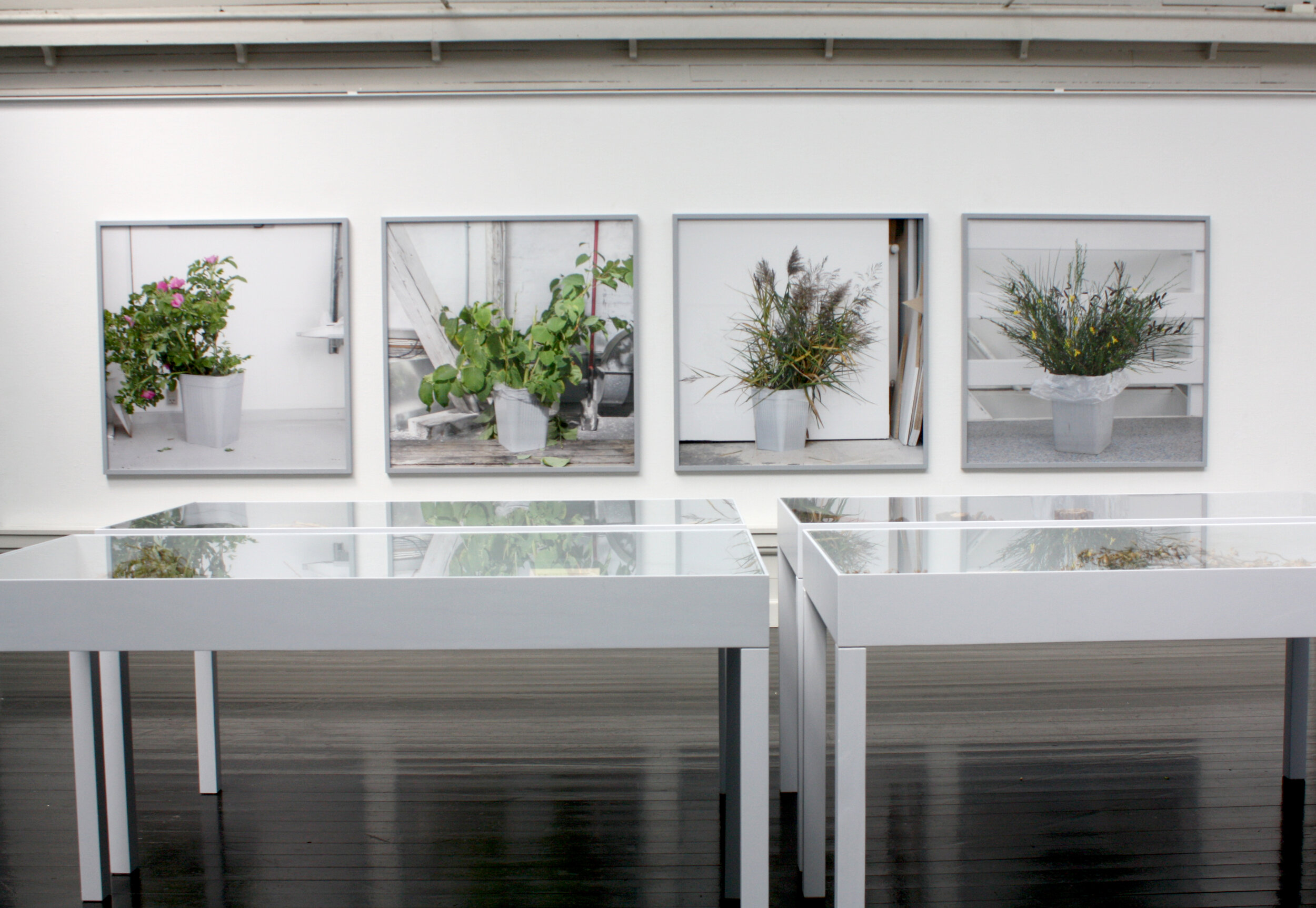Under plov. Ligger land. Under himmel. (Japansk Pileurt)
Faaborg Museum, Fuglsang Kunstmuseum, Ribe Kunstmuseum og Den Hirschsprungske Samling
Jordforbindelser - Dansk maleri 1780-1920 og det antropocæne landskab.
2018-2019
The last part of the traveling exhibition focuses on Japanese Knotweed, Reynoutria japonica (Japansk Pileurt). The plant grows in city parks in Denmark like Østre Anlæg, that surrounds the last of the four museums showing the exhibition, The Hirschsprung Collection. The Japanese Knotweed was introduced to Denmark from Eastern Asia in 1844 as an ornamental plant. At the time the plant was shown and awarded in flower exhibitions and praised for its beauty. Today it is on the list of the 100 most invasive species in the world. A complete elimination of the plant is considered impossible.
In England the Phalara Itadori, a species of psyllid which feeds on Japanese Knotweed, has been put out as a biological pesticide in an attempt to control the plant.
The risk of spreading when handling the Japanese Knotweed was considered so high, that Camilla Berner did not create a pavilion with the plant as she did with the other plant species of the project: Common Broom, the Common Reed and the Rugosa Rose. The Japanese Knotweed is aggressive, and the costs would be massive if the plant would spread further in the area of the museum.
The final exhibition in The Hirschsprung Collection consists of documentation of the three pavilions and the collection and registration of each of the four plant species. Photographs show each of the four plants staged in bouquet-like style in trash cans. Text fragments inform the audience about the biology of the plants and about the development of the project together with reflections on our relationship with nature.
Invasive species can be seen as a testimony of the man-made imbalance in nature, where the interconnectedness of everything is broken up. Should we strive to reestablish a preexisting order, or is it necessary now to begin to imagine a new kind of interconnectedness?
Selected text fragments from the exhibition in The Hirschsprung Collection (DK only):
”Når du læser det her, er det slutningen du læser, men eftersom der i værkets struktur ikke er en klar begyndelse og tilsvarende ende, er dette måske det første du læser.
Der har været en proces i gang for at nå hertil, der er sket en progression og alligevel er ét spørgsmål det samme: Hvad er naturen, hvis det er noget, der hele tiden skal "fikses"?
Vi har flyttet rundt på tingene, indført arter, der ikke hører til, og vi vil se temperaturstigninger som følge af klimaforandringerne, som yderligere vil forrykke naturens orden og de biologiske systemer.
Invasive arter og måden, vi håndterer dem på, siger noget om, hvordan vi mennesker fastholder en position i forhold til naturen, altså ikke mednaturen, men som noget, der agerer udenfor.
Invasive arter er et vidnesbyrd om den menneskeskabte ubalance i naturen, hvor altings forbundethed er brudt op. Skal man tilstræbe at genetablere, eller må man forestille sig en ny forbundethed?”
Exhibition view from installation at Synliggørelser. Den fri udstillingsbygning 2020. Photos: David Stjernholm.
Photos in the gallery below from the exhibition at Den Hirschsprungske Samling: Jacob Ljørring og Ole Arkhøj













